Orders, Decorations and Medals
Find out more about the Orders and Medals which are awarded to those who go above and beyond for the community or country.
Knight Bachelor
The Most Excellent Order of the British Empire
The Order of the Companions of Honour
The Royal Victorian Order
The Order of Merit
The Most Distinguished Order of St Michael and St George
The Most Honourable Order of the Bath
The Most Ancient and Most Noble Order of the Thistle
The Most Noble Order of the Garter
Knight Bachelor
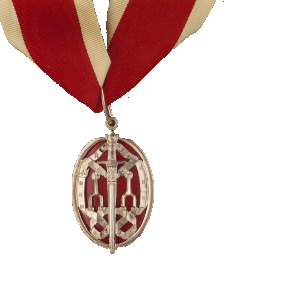
The Imperial Society of Knights Bachelor founded in 1908 acts as the Registry for Knights Bachelor. The Knights Bachelor do not constitute a Royal Order: it is an appointment. The appointment of Knight Bachelor (to men only) originates from the medieval period. Recipients have the title Sir but do not have post nominal letters. There is no direct equivalent appointment for women.
The Society maintains the Chapel of Knights Bachelor in St Paul’s Cathedral where it holds its Annual Service of Dedication.
The Most Excellent Order of the British Empire
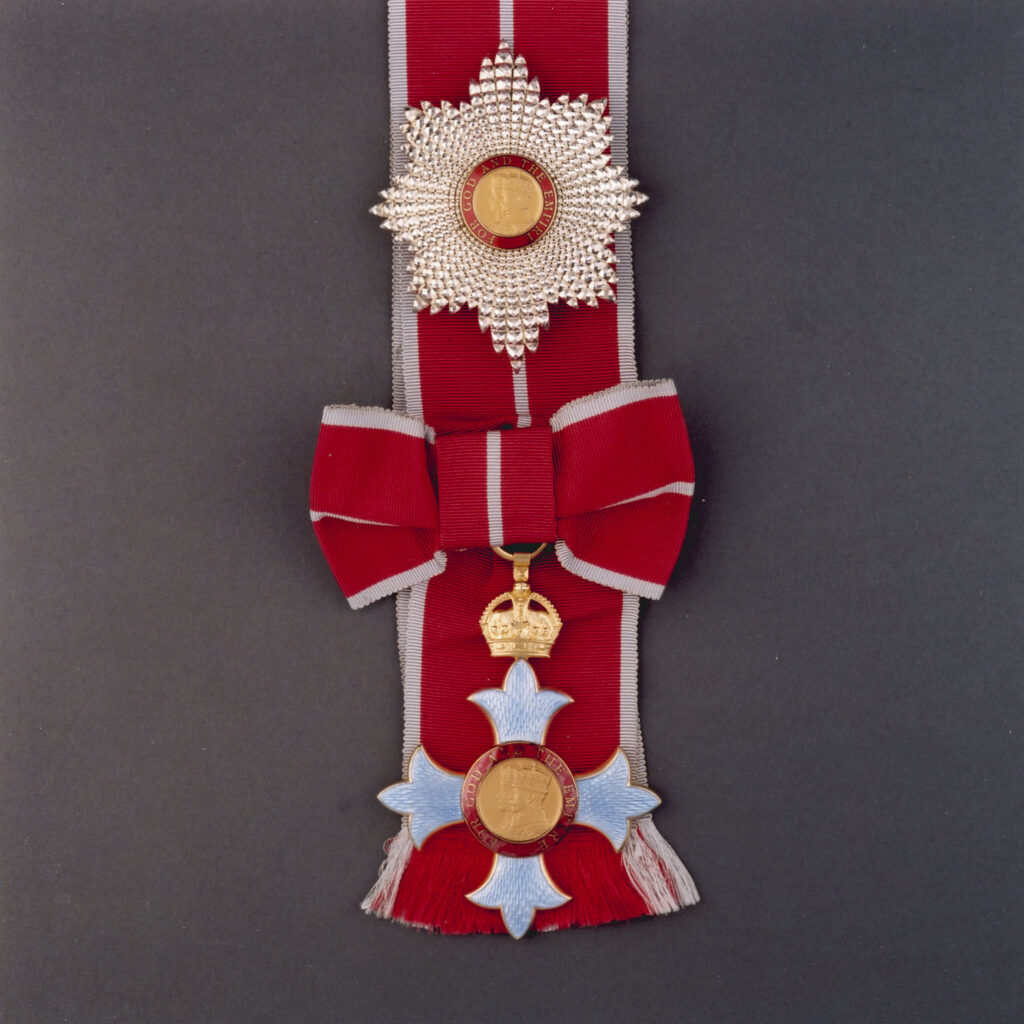
The Order of the British Empire was established by King George V in 1917 to honour those who had served in a non-combative role and expanded the Order to reward contributions to the Arts, Sciences, Charitable work and Public Service. The Order comprises five classes across both military and civilian divisions. The Order also includes the British Empire Medal presented to those who have contributed to service in their community.
The ‘Home Chapel’ of the Order is located within St Paul’s Cathedral. Members and Medallists can request use of the Chapel for weddings, baptisms and memorial services. A Service of Thanksgiving is held at the Cathedral for Members and Medallists every four years.
The motto for OBE is ‘For God and the Empire’.
Dame/Knight Grand Cross (GBE)
Grand Cross is the highest class in many of the Orders.
Damehood / Knighthood (DBE / KBE)
A pre-eminent contribution in any field of activity (usually, but not exclusively, at national level), or in a capacity which will be recognised by peer groups as inspirational and significant nationally and demonstrates sustained commitment.
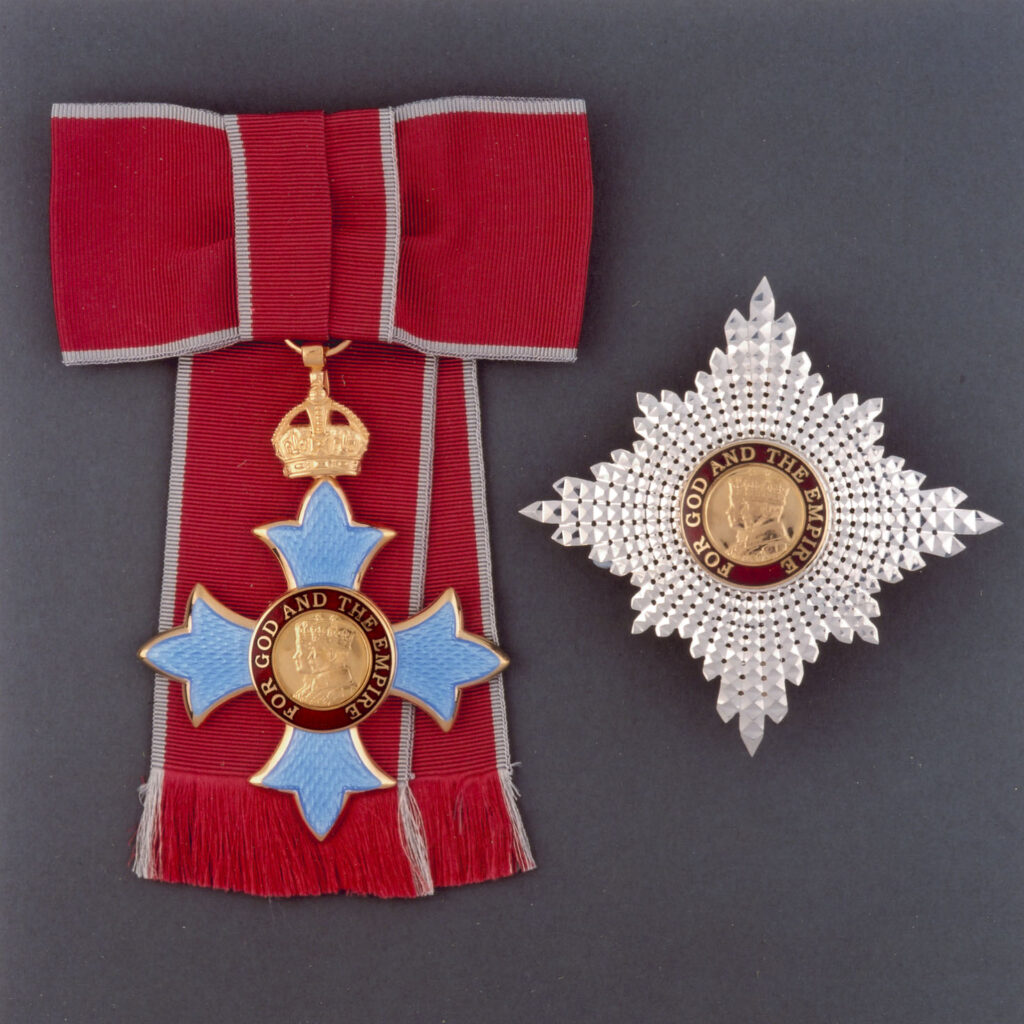

Commander of the British Empire (CBE)
A prominent national role of a lesser degree, a conspicuous leading role in regional affairs through achievement or service to the community, or a highly distinguished, innovative contribution in his or her area of activity.
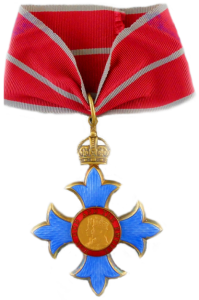
Officer of the Order of the British Empire (OBE)
Distinguished regional or county-wide role in any field, through achievement or service to the community including notable practitioners known nationally.
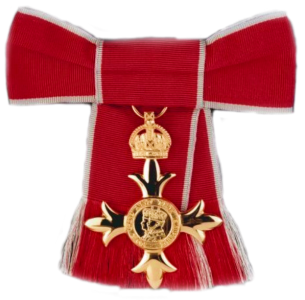
Member of the Order of the British Empire (MBE)
Achievement or service in and to the community which is outstanding in its field and has delivered sustained and real impact which stands out as an example to others.

British Empire Medal (BEM)
Achievement or contribution of a very “hands-on” service to the community in a local geographical area.
This might take the form of sustained commitment in support of very local charitable and/or voluntary activity; or innovative work that has delivered real impact but that is relatively short (three to four years) in duration.
Presentations of BEMs are made locally.
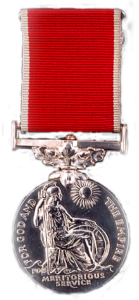
The Order of the Companions of Honour
The Order of the Companions of Honour was founded by King George V in 1917 to recognise outstanding achievements in the Arts, Sciences, Medicine and Public Service. There were originally 18 appointments made in 1917 connected to the War effort, including four women. The Order is now restricted to 65 Members from across the Commonwealth, along with Honorary Members in addition to the 65.
The ‘Home Chapel’ of the Order is The Chapel Royal at Hampton Court Palace and was dedicated in 2019. Members of the Order can request use of the Chapel for weddings, baptisms and memorial services.
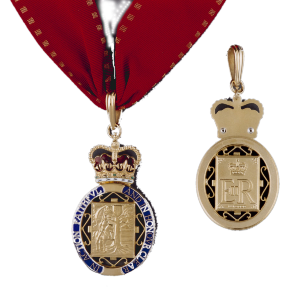
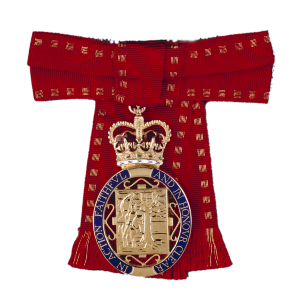
The Royal Victorian Order
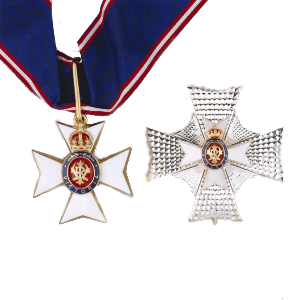
The Royal Victorian Order was founded by Queen Victoria in 1896. All awards bestowed as part of the Order are given at the discretion of the Sovereign and not on the advice of the Prime Minister. Appointments to the Order can be seen in a section of the New Year and Birthday Honours Lists, and are also made on other occasions throughout the year. The Order is used to recognise a wide variety of service to the Sovereign and the Royal Family. The Order is divided into five grades of membership:
- Knight / Dame Grand Cross – GCVO
- Knight / Dame Commander – KCVO / DCVO
- Commander – CVO
- Lieutenant – LVO
- Member – MVO
- Medal – RVM
The ‘Home Chapel’ of the Order is The King’s Chapel of the Savoy. Members and Medallists of the Order are able to request use of the Chapel for weddings, baptisms and memorial services.
The motto for the Order is ‘Victoria’.
The Order of Merit
The Order of Merit, founded in 1902 by King Edward VII, is a special mark of honour conferred by the Sovereign on individuals of exceptional distinction in the arts, learning, sciences and other areas such as public service. Appointments to the Order are the Sovereign’s personal gift and ministerial advice is not required. The Order is restricted to 24 members as well as additional foreign recipients.
The ‘Home Chapel’ of the Order is the Chapel Royal at St James’s Palace.
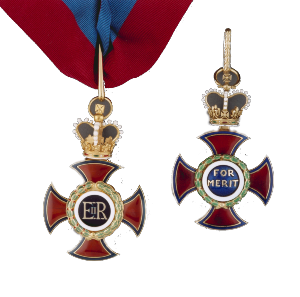
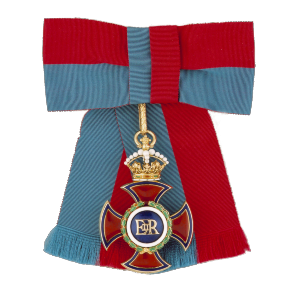
The Most Distinguished Order of St Michael and St George
The Order of St Michael and St George was founded in 1818. It was originally bestowed solely upon those in high positions in the Mediterranean (Malta and the Ionian Islands) but now recognises service to the UK, overseas or internationally, or in relation to Foreign and Commonwealth affairs. This could be, for example, senior diplomats for exceptional service, outstanding contributions to major International Organisations and the Sovereign’s Representatives in Commonwealth Realms.
The Foreign, Commonwealth and Development Office is responsible for the Order and nominations should be made to them. Someone will receive an ‘honorary award’ if they have given service to the UK and they’re not British or a national of a country where The King is Head of State.
The Order now consists of the Sovereign, the Grand Master (currently The Duke of Kent) and includes three classes which were all created with the Order in 1818.
The ‘Home Chapel’ of the Order is located within St Paul’s Cathedral. Members of the Order are able to request use of the Chapel for weddings, baptisms and memorial services. A Service of Thanksgiving is held at the Cathedral for Members and guests every four years. The original Chapel of the Order was in the Palace of Corfu. The current chapel has been in St Paul’s Cathedral since 1906.
The motto for the Order is Auspicium Melioris Aevi which means ‘Token of a better age.’
Dames and Knights Grand Cross of the Order of St Michael and St George (GCMG)
This is the first class in the Order. The Knights and Dames Grand Cross display their banners of arms in the Chapel of the Order in St Paul’s. This award recognises the most exceptional and sustained service for the UK overseas and in international affairs.
Dames and Knights Commander of the Order of St Michael and St George (DCMG or KCMG)
The second class in the Order recognises pre-eminent contributions overseas and in international affairs, for example exceptional service in the most senior international roles.
Companions of the Order of St Michael and St George (CMG)
The third class in the Order recognises prominent and highly distinguished contributions overseas and in international affairs for example exceptional service in the senior international roles.
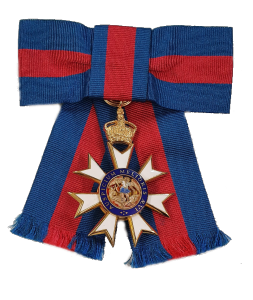

The Most Honourable Order of the Bath
The Most Honourable Order of the Bath was established by King George I in 1725 although it is believed to originally date back as far as the eighth century. It is awarded to members of the military or civil service for exemplary service. It is thought that the Order is so named because bathing was seen as a purification ritual. The Order consists of the Sovereign, the Great Master (the post is currently vacant but was previously held by the Prince of Wales) and three Classes of members:
- Knight / Dame Grand Cross – GCB
- Knight / Dame Commander KCB/DCB
- Companions – CB
The first and second classes of the Order carry the titles Dame or Sir. The Badge of the Order depicts three crowns with the order’s motto, as well as ‘Ich dien’ (‘I serve,’ the motto of the Prince of Wales), and the emblems of England, Scotland, and Ireland (rose, thistle, and shamrock, respectively).
The ‘Home Chapel’ of the Order is the Lady Chapel within Westminster Abbey. Members of the Order are able to request use of the Chapel for weddings, baptisms and memorial services. A Service of Thanksgiving is held at Westminster Abbey for Members and guests every four years.
The motto for the Order is ‘Tria Juncta In Uno’ – three joined in one.
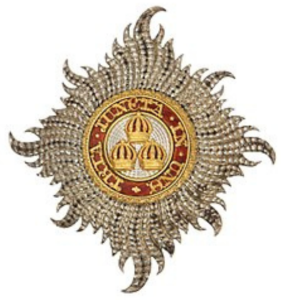
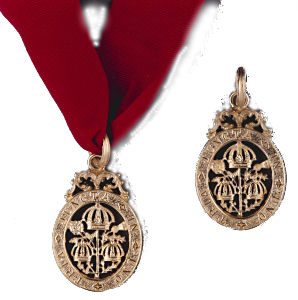
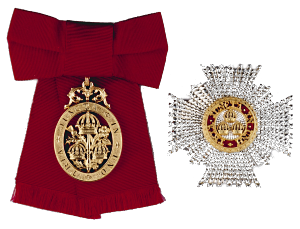
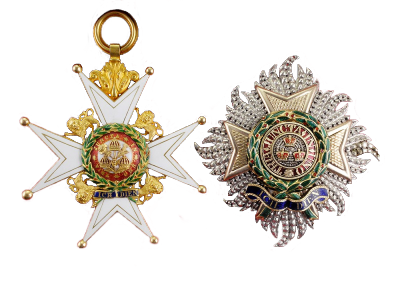
Dames and Knights Grand Cross of the Order of the Bath (GCB)
The Dames and Knights Grand Cross are allotted stalls in Westminster Abbey where the Order’s chapel is.
Dame and Knight Commander of the Order of the Bath (DCB or KCB)
Since 1815 this has been the second level of the Order of the Bath (ranking below Knights Grand Cross and above Companions). Military officers have been appointed to this rank since 1815, civilians from 1847.
Companions of the Order of the Bath (CB)
The Companion of the Order of the Bath is second only to a damehood or knighthood.
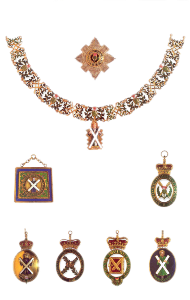
The Most Ancient and Most Noble Order of the Thistle
The King is the Sovereign of the Order of the Thistle, and appointments made to the Order are entirely his personal gift, in recognition of men and women who have held public office or have contributed significantly to national life. The honour can only be bestowed upon Scottish nationals. The Order is limited to 16 ordinary members. However, members of the Royal Family, as well as members of Royal Families from other countries, may be appointed as ‘Extra Knights and Ladies’.
The ‘Home Chapel’ of the Order is the Chapel at St Giles High Kirk in Edinburgh.
The Most Noble Order of the Garter
The knights companion and ladies companion of the Garter are chosen personally by the Sovereign to honour those who have held public office, who have contributed in a particular way to national life or who have served the Sovereign personally. The Order is limited to 24 ordinary members.
The ‘Home Chapel’ of the Order is St George’s Chapel, Windsor